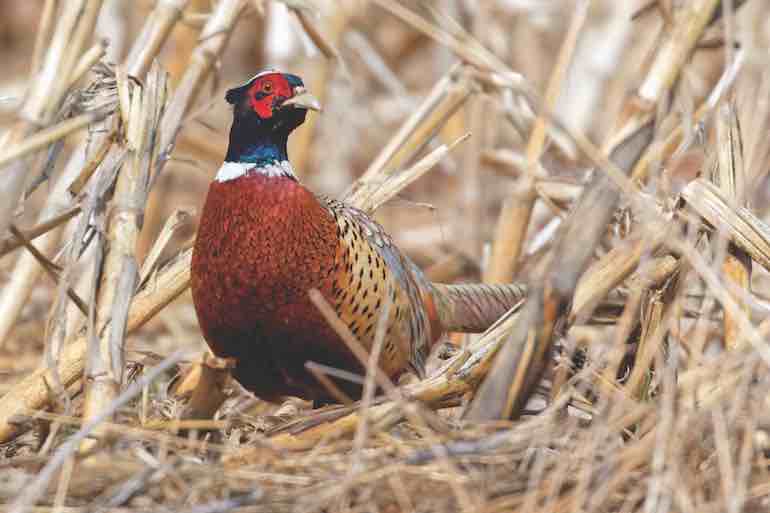
Shutterstock image
My best buddy’s dad stopped the van and waited for Jeff and me to get out with our shotguns, shells, vests, and a dog or two. We were in western Kansas, and the plan was for Jeff and me to walk a grassy drainage ditch between two wheat-stubble fields all the way across the 1-mile section. His dad would pick us up at the other end. We figured we’d find a ring-necked pheasant or two hiding in the ditch’s heavy cover.
Jeff and I had high hopes for our first hunt of the year, but we never expected what would happen as we began to work the ditch. We hadn’t gone 50 yards before roosters began flushing from the heavy cover. Birds flew, guns boomed and feathers floated to the ground. Pheasants were retrieved, and before they could be placed in our game bags, others would flush. More shooting soon followed.
We made it less than a quarter mile before we filled our limits of fat ringnecks. Guns unloaded, we were not looking forward to the long, heavily laden walk to the vehicle. We made it a quick jaunt, though, because we had quite a story to tell!
As teenagers, we couldn’t believe what had just occurred. Little did we know that we were experiencing the “golden age” of Kansas pheasant hunting, when shooting a limit wasn’t a tough proposition.
That was more than 40 years ago. It isn’t quite as good nowadays, but I’m happy to report that Kansas still has dynamite hunting for both pheasant and quail. If you know where to look and how to hunt these birds, you can have some of the best wing-shooting available in the nation today—even on public lands.
Access Across the State
While decent pheasant hunting can be had in several other states including Nebraska, South Dakota and Iowa, Kansas is considered by many to be the reigning pheasant-hunting promised land. Add abundant opportunities for quail, and the Sunflower State sits high on the list of upland destinations. Of course, some of the best Kansas bird hunting is found on private lands. Sure, there are still some farms where you can walk up to the door, knock, ask to hunt and get permission. But with trends toward leasing hunting land, those kinds of opportunities are less common than they were 20 or 30 years ago.
Fortunately, there are plenty of public hunting lands in Kansas, ranging from state wildlife areas to U.S. Army bases that are open to free hunting with the proper permits. In southwest Kansas, Cheyenne Bottoms Wildlife Area (WA) near Great Bend typically offers good public pheasant hunting, as does Cottonwood Flats WA. Both of these properties also have pretty good quail populations. Other wildlife areas in western Kansas that are well worth a trip for birds include Greeley, Lovewell and Webster.
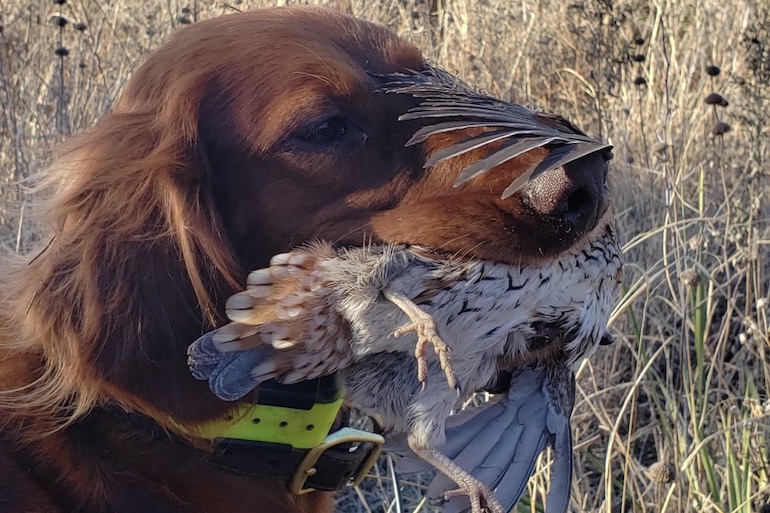
In the central part of the state, both Kaw WA near Arkansas City and Slate Creek Wetland WA near Oxford are proven producers of quail and also provide consistent pheasant hunting. Byron Walker WA is another good spot in central Kansas.
Farther east, Spring River WA near Crestline is a great quail hunting area. An occasional pheasant can be found there, but it’s not the place to go if you’re set on killing a limit of ringnecks. Copan WA also offers pretty good quail hunting, but here again, pheasants are quite sparse.
In the northeastern portion of the state, the sprawling Fort Riley Army base near Manhattan offers thousands of acres of good upland bird hunting. We were besieged by a major blizzard during the two days I hunted there last fall, so success was low. However, it was easy to see that the habitat supported decent numbers of pheasants, quail and prairie chickens. Note that special permits are required to hunt on Fort Riley, but they can be easily received by jumping through a few governmental hoops.
Kansas offers bird hunters numerous other options across the state with its Walk-In Hunting Access (WIHA) Program, the nation’s crown jewel of public-private hunting partnerships. Entering its 25th year in 2020, the WIHA Program is an effort to enhance the state’s already strong hunting heritage by providing hunters access to private property, with both hunters and landowners benefitting.
One thing worth noting about Kansas walk-in areas is you’ll find quite a crowd early in the season, but then hunter numbers diminish later. Obviously, you’ll also find lower bird numbers later on, so that makes it kind of a tradeoff.
In fall 2018, I took my dad to Kansas on opening weekend to celebrate his 80th birthday. He had taken me pheasant and quail hunting hundreds of times throughout my youth, and this was my way to repay part of that favor. We arrived a day early to do a little scouting and find a place we thought would hold a rooster or two. Driving county roads around the walk-in areas, we discovered three likely spots. At one area, we even saw five or six roosters fly out of a stubble field into adjacent thick cover on the walk-in property. We knew they were going to roost, and there was no doubt where we would be the next morning.
We got there extra early, or so we thought, the next day just to be sure to get our spot. It was probably one-and-half hours before legal shooting time, and imagine our surprise to see seven different pickups parked alongside the road at various locations around the 160-acre property!
The lesson behind that experience was twofold. If you’re going to hunt walk-in areas on opening day or early in the season, expect lots of other hunters. That will require flexibility and a little extra work to make sure you don’t interfere with others or don’t get mixed up in unpleasant dog conflicts. Even better, after the first few weeks, hunter numbers begin to fall drastically. By January, walk-in areas see only moderate traffic, but there are still plenty of birds left. They’re wilder, wilier birds to be sure, but you can find them and kill a few if you’re willing to hunt hard.
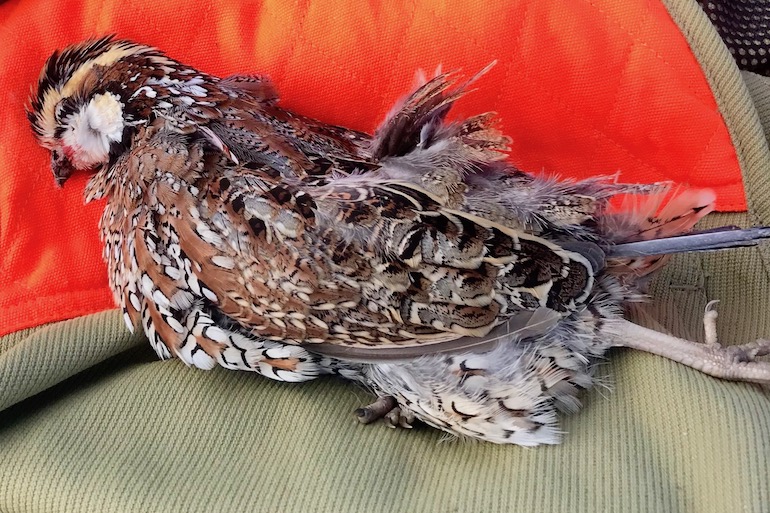
Finding Hot Spots
In a nutshell, finding food and cover is the key to killing lots of Kansas pheasants. If there’s not any agriculture within a half mile or so, don’t expect high numbers of birds.
Sure, there are enough wild foods to support skimpy populations, but the lion’s share of birds will be found near cultivated fields. In the fall that means stubble from grains that have already been harvested. Hunters have their opinions on which stubble is best, whether it’s corn, wheat, milo or another grain. Pheasants love all of the above, which can be easily seen by inspecting the crop of a harvested bird and looking at the variety of seeds within it.
Both pheasants and quail absolutely need cover for protection from weather and predators. Early in the season, you might be able to find birds in fairly sparse cover, not only because it is warm but also because they haven’t been hunted hard yet. After several days of being pursued, however, pheasants are more likely to be holed up in the thickest, nastiest cover you can find—often places that are nearly impossible to walk through, much less get a shot off at a fleeing bird.
Prime locations are anywhere food meets cover. For instance, a corn- or wheat-stubble field adjacent to tall, thick CRP grass is a near-perfect scenario. Birds can roost overnight in the thick cover, safe from predators and inclement weather. In the morning, they’ll trek over to the stubble and begin feeding, often returning to cover during midday to loaf. Come afternoon, they’ll take another foray into the food patch and fill their crops. Toward dark they’ll walk or fly back to cover to roost.
If there’s one thing I’ve learned in my 50-plus years of hunting pheasants and other gamebirds on public lands, it’s that you’ve got to be willing to go deep. Those great-looking places within an easy 100-yard walk from the truck might hold birds early on, but once the season starts they’ll be far less productive.
Working through the really hard stuff with dogs is the key to success on public lands, and many people choose not to put that much work into their hunt. Also, being willing to walk to places far from parking areas often can get you into pheasants that less-ambitious hunters looking for easy birds will never find. A large CRP field might require a half-mile walk to get to the far side, but the border where that side meets a stubble field could be where all the roosters are hiding. You’ll never know if you don’t put in the steps to find out.
While many hunters concentrate on big tracts of stubble or CRP, I’ve found places that seem too small to be worth hunting often hold good numbers of birds. I learned this lesson as a child while hunting near a dilapidated house set back in corn stubble. The thick cover around the house harbored lots of roosters, and seldom did we hit that spot without putting up a bird or two. Note, however, that hunting spots like this often requires some strategy. Pheasants have no qualms about running out of range to flush, or out the end of a tree row and into a stubble field. Placing even just one blocker in the right location on these small areas can help ensure that at least one hunter gets a shot at a rooster.
Such spots don’t have to be abandoned farmhouses, and many can be found on Kansas walk-in areas. Whether it’s a grown-up area around an old barn, windmill, farm equipment or even a pond, if it’s thick cover near food, there will often be birds there. Many hunters drive past such areas because they are “too small,” but ignore them at your peril.
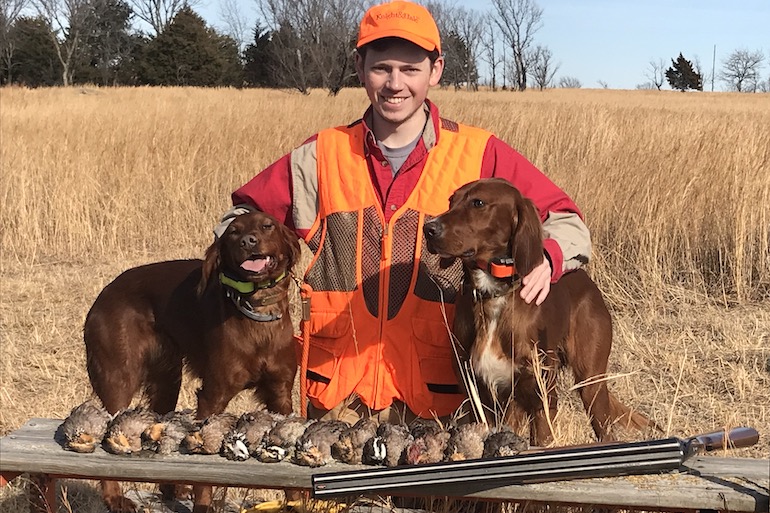
Grassland Bonus
In addition to pheasants and quail, Kansas hunters have the opportunity to chase another awesome gamebird that many out-of-staters have never pursued: the prairie chicken. About half of America’s lesser prairie chicken population resides in western Kansas, with the other half in the sandhills and prairies of western Oklahoma, the Texas panhandle including the Llano Estacado, eastern New Mexico and southeastern Colorado.
Kansas is also home to the other prairie chicken species—the greater prairie chicken—and hunters pursue both. However, strategy and timing are quite different for these hunts. Greater prairie chickens thrive in the Flint Hills, a roughly 50-mile-wide band of tallgrass prairie that extends from the Oklahoma border nearly to Nebraska in the eastern third of the state. The greater population also runs into central and even western Kansas, although in those areas the birds are relatively few and far between.
Kansas prairie chickens offer two completely different types of hunting opportunities. An early prairie chicken season – well before pheasant and quail seasons – typically runs from Sept. 15 to Oct. 15 and provides an opportunity to hunt young birds that are more likely to hold for pointing dogs. Later in the year (late November through January), many hunters bag prairie chickens by pass-shooting them as they travel to grain fields in the morning after leaving their roost.
Decades after I roamed its tall grass and stubble as a teen, Kansas continues to be a dream destination for upland hunters. The state offers several gamebird species, a wide range of geography in which to hunt them, and good, down-to-earth folks who appreciate hunters and understand their contributions to conservation and local economies. Add to that 1 million-plus acres of public hunting lands, and Kansas may be one of the easiest places to check off your upland bucket list.
Locating Walk-In Areas

Started in 1995, the Kansas Department of Wildlife, Parks and Tourism’s Walk-In Hunting Access (WIHA) Program is one of the first, biggest and most successful public-access initiatives in the country. While numbers of participating properties fluctuate, there is typically more than 1 million acres enrolled in WIHA each year. Land enrolled can be in CRP, native rangeland, wheat or milo stubble, and riparian or wetland areas.
Many WIHA lands in the western part of the state are great for pheasant hunting, and because of habitat overlap, bobwhite quail can be found on many. Same goes for those in the central part of the state. Eastern Kansas walk-in areas often have pretty good quail numbers, with only an occasional pheasant.
While paper maps can be found with a little searching, the WIHA app is in some ways better. It allows you to look at the properties on your smartphone screen and see where your vehicle is traveling in relation to those properties. With your hunting partner as a navigator, these properties are easy to find. They are also well marked when you get there. Find out more about walk-in areas in the state by visiting ksoutdoors.com.
Kansas Upland Trip Planner
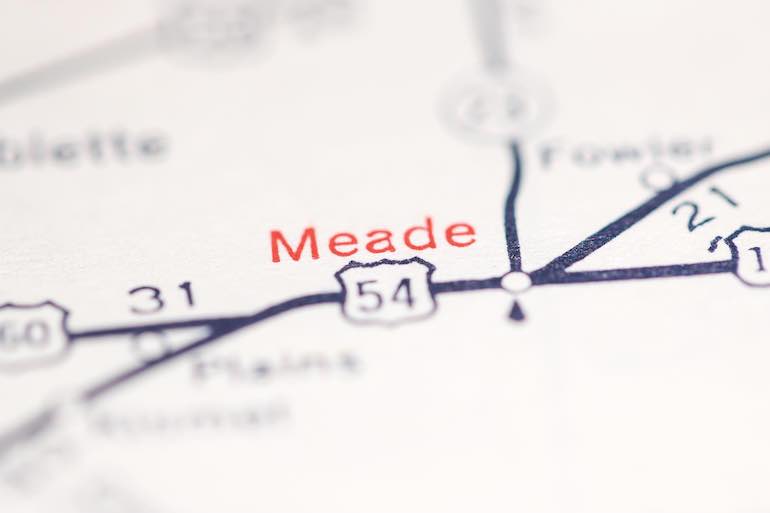
A Kansas license for hunting upland gamebirds costs a nonresident just a little more than $100, which is a bargain in my book. Buy it online before going if possible, because it can be somewhat tricky to get a license from a local agent the day before the opener. Keep it on your person when hunting, as game wardens diligently check hunters to ensure they are properly licensed.
Most small Kansas towns have a cheap hotel or two, and nearly all love visiting hunters. Plan ahead and find a room well before your trip, as you’ll likely have a hard time finding lodging if you wait till just before the season starts. Bird hunting attracts lots of out-of-towners to local areas.
Airbnb and VRBO offer some opportunities, although many owners of these rental properties don’t allow pets, which makes having hunting dogs along problematic. It doesn’t hurt to do a search, though. Two years ago we found a fair-priced old farmhouse on VRBO that had plenty of room for everyone and allowed dogs, since the owner happily catered to hunters. The house was about 30 miles from where we were hunting, but the super accommodations made the round trip worth the drive.
If you think lots of Kansas is just prairie and wild land, you are right. But that doesn’t mean there aren’t some sights to see on your way to and from your hunting grounds. The city of Meade (population 1,700) is home to the Dalton Gang Hideout, celebrating the famous outlaw gang that lost most of its members trying to rob two banks at the same time in Coffeyville. Colby features the famous Cooper Barn, one of the 8 Wonders of Kansas Architecture. It’s thought to be the largest barn in the whole state, and one of the finest show-cattle barns ever made. Consider a visit to the Kearney County Museum in Lakin. The historic museum houses many interesting exhibits featuring items from the late 1800s and early 1900s, when Kansas was really wild.









